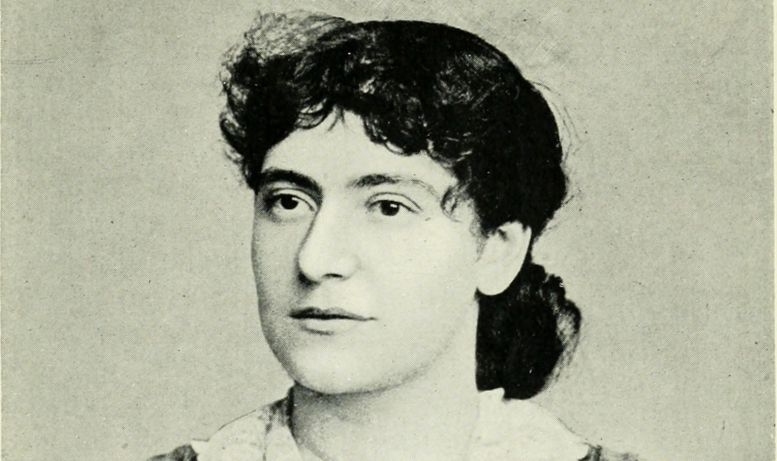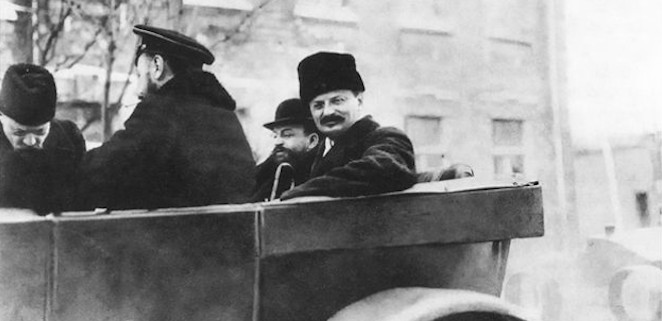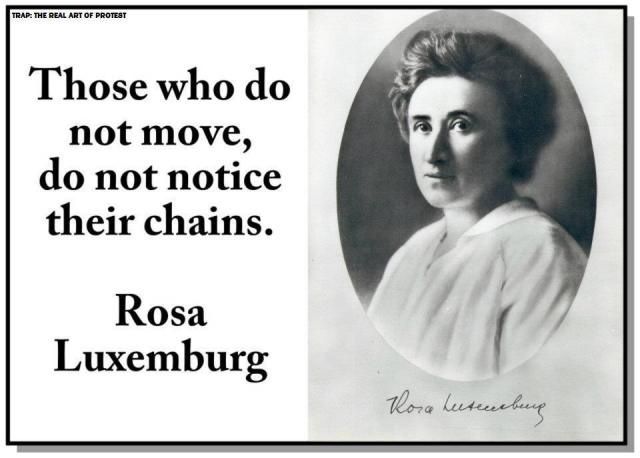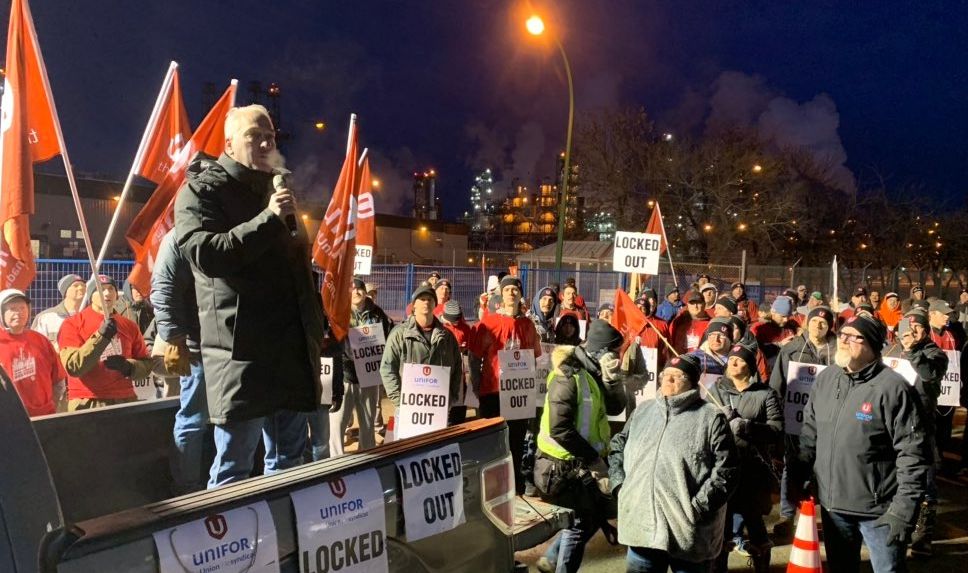Jackie Douglas is a member of Socialist Alternative (England, Wales & Scotland).
125 years ago Eleanor Marx died. She was one of the earliest advocates for the ideas of socialist feminism and internationalism, while working as a trade union organiser with a focus on organising women workers in united struggle with men.
Jackie Grunsell, Socialist Alternative, England, Scotland and Wales
Eleanor Marx, born in 1855, the youngest daughter of Karl Marx and Jenny Von Westphalen, inevitably spent a childhood steeped in political ideas and discussion. She dropped out of school and was educated by her father with regular input from Friedrich Engels and his partner Lizzy Burns. She became her father’s trusted secretary in her teens, at the time when he was working on Capital, an experience which left Eleanor with a deep understanding of the capitalist economic system, the exploitation of the working class within it, and their crucial role in changing the system to a socialist one.
Throughout her life she proved her relentless commitment to changing society — fighting for reforms which would improve working peoples’ lives, whilst arguing for the need for socialism. Amongst other things she was one of the earliest advocates for the ideas of socialist feminism and internationalism, while working as a trade union organiser with a focus on organising women workers in united struggle with men.
At just 16 years of age, Eleanor was already beginning to put the theoretical knowledge she’d gained to good use. She was visiting her sister in France at the time of the Paris Commune in 1871 where the working class seized power. On her return home she threw herself into organising support for French refugees fleeing the savage repression rained down on the revolutionaries by the French state.
Paris Commune
Eleanor had also witnessed the role that women had played in the movement. Women became leaders and fought as equals alongside the male Communards. For the short period the working-class held power they implemented policies to improve women’s rights through equal pay, divorce rights and improved education for girls.
In commemorating the anniversary of the Commune in March 1886 Eleanor emphasised women’s part in this battle in saying: “When the revolution comes — and it must come — it will be by the workers, without discrimination of sex or trade or country, standing and fighting shoulder to shoulder.”
After her father’s death, Eleanor was crucial to collating and translating his notes and began becoming more directly involved in the workers’ movements. In 1884 she joined the Social Democratic Federation (SDF) believing in the importance of trying to reach a mass audience with socialist ideas. However, she and others on the Executive of this group soon left to set up the Socialist League due to differences with the SDF’s founder Henry Hyndman. Hyndman had opposed Eleanor’s proposal to send delegates to the Roubaix Congress of revolutionary workers and as time went on his nationalist approach stood in stark contrast to the internationalism she and others showed.
Socialist feminism
Eleanor’s close relationship with Friedrich Engels meant she had been involved in reading drafts of his developing book — The Origin of the Family, Private Property and the State which was published in 1884.
In 1886 Eleanor went on to co-author the pamphlet The Woman Question with her partner and fellow socialist Edward Aveling. Like Engels, they saw women’s oppression as intrinsically linked to the capitalist system. At that time women made up close to a third of the adult labour force but earned about 50% of the average male wage. Eleanor saw feminism as going hand in hand with socialism. She argued for working-class women and men to fight in solidarity on a class basis, recognising that women were amongst the most oppressed and must be consciously involved in the struggle for socialist change.
Whilst the pamphlet recognised that women of all classes faced oppression under capitalism, it was clear that bourgeois feminism (‘advanced women’) did not have the answers: “The school of whom we speak make no suggestion that is outside the limits of the society of today. Hence their work is, always from our point of view, of little value.”
The Woman Question highlighted the unpaid “serfdom recognised by law” inherent in the social role of women under capitalism: undertaking domestic work within the home and caring for children. She realised the difficulties this meant for women getting organised.
But later, through her trade union work, she strove to overcome these barriers. Working-class women are essential to the success of any movement to achieve socialism and the day-to-day issues they faced must be taken up in order to win them and persuade them of the need to fight.
The pamphlet was ahead of its time in that it does not shy away from discussing the need for sex education and for relationships between men and women to fundamentally change.
Internationalism
Shortly after the publication of the book, Eleanor and Aveling embarked on an arduous 15-week speaking tour in the USA where she spoke at meetings night after night, sometimes to gatherings of thousands of workers. Although exhausting, the experience inspired her to write The Working-class Movement in America which described the conditions of working-class people there, the super-exploitation of woman and child labour by the employers, and the thirst for socialist ideas which she found there.
1889 saw the founding conference of the Second International in Paris. As ever, Eleanor was in the thick of things, acting as an indispensable interpreter across several languages. At the same time, back home in London, Will Thorne and fellow gasworkers were meeting to form a union which demanded an eight-hour working day, a significant reduction from the standard 12-hour day at the time — they won the demand in their workplace without having to take a day’s strike action.
The union grew rapidly as a result, with Thorne being elected General Secretary, and he and Eleanor met when she returned from Paris. This began many years of political collaboration and friendship in which Eleanor helped him with reading and writing skills and assisted with the paperwork he was struggling with in his new role.
New Unionism
Industrial activity was mounting, and Eleanor immersed herself in it. She volunteered her clerical skills in a number of disputes and could be relied upon as a powerful orator at public rallies and meetings. She assisted in the Bryant and May strike of 1888, the Dock Strike in early 1889, as well as the work of the gasworkers’ union, and was the only person unanimously elected to its executive council in 1890. The matchwomen employed by Bryant and May went on strike over their working conditions in 1888. Their strike is historically significant due to the fact that it was led by working class women, many of whom were immigrants from Ireland. Eleanor Marx played an important role in assisting the striking women.
Later in 1889 a strike broke out at a factory in Silvertown in the East End. Eleanor began travelling there daily to attend factory meetings and made appeals directly to the women to form a union in collaboration with the men’s organisation. She wrote: “The great lesson of the Dock Strike is that the skilled and unskilled must combine. The lesson here is that men and women have to work in unison. Women are used by the employer to keep men’s wages down and not until women refuse to undercut their husbands and brothers will this situation change.”
It was typical of Eleanor that she put words into action and she went on to form the first women’s branch of the National Union of Gasworkers and General Labourers. They immediately set to work recruiting new members, campaigning and raising funds for the strike.
Organising a trade union
This had been Eleanor’s first experience of a direct role in trade union leadership, and this later enabled her to play a role at future Trade Union Congress meetings. She had to fight to be there, arguing that her role as union organiser and typist made her “a worker” with as much right to be there as an industrial worker! Over the course of a few months, Eleanor had consolidated her part in the development of New Unionism, which was more radicalised and militant than the old craft unions which often collaborated with the employer and were playing the role of holding back working-class movements at the time.
Eleanor’s trade union activities led her to organise solidarity for the Jewish tailors’ strike also taking place in London’s East End around this time. She campaigned against anti-semitism, drawing upon her own Jewish heritage. She learned to speak Yiddish in order to reach Jewish women in the community, always determined to smash down any obstacle to women getting organised.
Eleanor continually sought out any opportunity to speak to working-class people and famously spoke at a May Day demonstration in Hyde Park in 1890 where she highlighted the need to go beyond reforms and build a socialist world: “Socialists believe that the eight hours day is the first and most immediate step to be taken, and we aim at a time when there will no longer be one class supporting two others, but the unemployed both at the top and at the bottom of society will be got rid of”.
Women’s liberation
While the Socialist League had fallen apart in 1889 Eleanor continued her activities, returning again and again to the struggle for women’s liberation. She translated a report by Clara Zetkin, a German socialist, from the Gotha Congress in 1896, in order to bring her ideas to a British audience. She wrote: “Working class women cannot be like the bourgeois woman who has to fight against the man of her own class. With proletarian women, on the contrary, it is a struggle of the women with the man of her own class against the capitalist class. She has no need to fight the men of her class in order to break down the barriers that shut her out from free competition. The greed of capital and the development of modern industry have relieved her from this strife. Her end and aim are not the right of free competition with men, but to obtain the political power of the proletariat.”
This did not mean she didn’t have to confront some men’s opposition to her involvement in the movement. When she spoke, she repeatedly reminded men they had a duty to do their share of childcare and housework to ensure women could participate in the social and political struggle. Continuing to seek out a political home, Eleanor attended the founding conference of the Independent Labour Party as an observer but did not join and re-joined the SDF in 1897.
Tragically, it was shortly after this in 1898 that Eleanor committed suicide, it is thought due to the discovery that Edward Aveling, her long-time partner, had married another woman in secret whilst still living with Eleanor. Her death was a blow to the worker’s movement. Will Thorne reacted to the loss saying: “But for this tragedy, I believe Eleanor would still have been living and would have been a greater women’s leader than the greatest of contemporary women”.
Her enormous contribution to the working-class movement and the struggle against women’s oppression, is undeniable. She is an inspiring example of how ideas and theory can be translated into a practical weapon in fighting for socialism.




